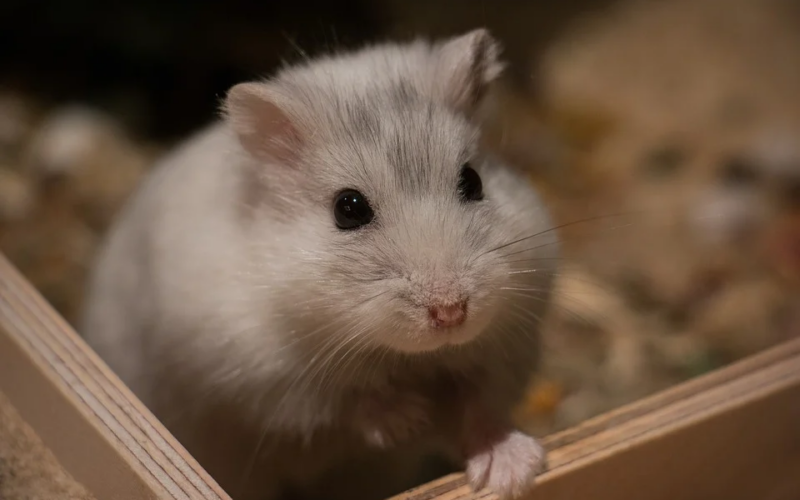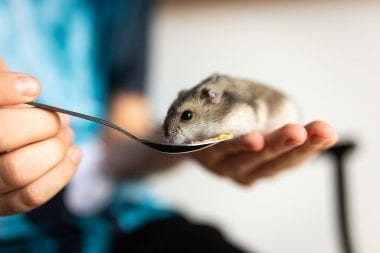Image Source
Are you thinking about getting a hamster? There are many types of hamster breeds, but which one is best suited for you? Hamsters are excellent pets, especially for first-time pet parents. They are quite small and do not need much room. You cannot ignore their cute eyes or cheerful disposition either. The physical characteristics of each hamster breed vary according to the region they’re from. So it helps to know about each breed before making any a part of your family.
You might have a hamster in mind, but there are several things to think about when selecting the right breed for you.
Benefits of Adopting a Pet Hamster
It’s not surprising that most people choose hamsters as their first pet. They require little maintenance and the cost of owning is very low. Keep in mind, every pet needs some care which includes the following:
- A clean and healthy living space
- Nutritious food
- Regular human contact
- Routine veterinary attention
All hamster breeds are no different. Here are a few benefits of adopting a pet hamster:
- The hamster’s small size makes it an ideal pet for apartments as well as homes. Their tiny size also means they don’t need a large cage.
- Hamsters have a friendly disposition. They don’t need much human interaction. There are hamster species that prefer to be solo such as the Syrian hamster. This breed likes to stay alone but with regular handling, it will enjoy interacting with its owners.
- Most hamster breeds make the perfect pets for first-time pet parents and responsible children.
- It’s entertaining to keep a hamster because they are quirky and active. You can entertain yourself for hours just watching them.
- Hamsters are fairly tidy creatures, so you won’t need to spend much time cleaning. Remember to keep lots of bedding in its cage because hamsters love to burrow.
9 hamster breeds you should consider
Even though hamsters are wonderful pets, every breed has its unique personality and physical characteristics. It’s necessary to research these differences beforehand. To help you figure out which breed is suitable for your family, we’ve compiled information about nine hamster breeds.
1. Syrian hamster.
This is the most popular breed. Also called Teddy Bear hamsters, the breed has a loving and friendly disposition. Syrian hamsters are easy to handle and form strong bonds with their owners. This is why this breed is the best choice for children.
In terms of physical appearance, the Syrian or Teddy Bear hamster may grow up to seven inches in length. They are slightly larger than other hamster breeds. They have a relaxed demeanor which is why they’re easy to hold and pat. Although Syrian hamsters are loving with their pet parents, they aren’t sociable with animals of their kind. They prefer to be alone otherwise they engage in frequent fights for domination.
Teddy Bear hamsters are nocturnal. This means they’re very active at night and dull during the daytime. This might not appeal to you if you prefer to interact with your pet in the daytime. Syrian hamsters have an average lifespan of three years, but they can live up to four years.
2. Chinese hamster.
This hamster breed is a lot smaller than its Teddy Bear cousin. At four inches in length, the Chinese hamster is more like a mouse than a big rodent. Nevertheless, this breed is very quick on its feet. In addition, they’re a lot more playful and interactive than other hamster breeds.
However, Chinese hamsters need more attention than Syrian hamsters. As a pet parent, you cannot neglect to interact with it. If the Chinese hamster gets bored, you can expect destructive behaviors. This is what makes them slightly more high maintenance than other breeds. If you enjoy playing and interacting with your hamster, then you’ll do well with a Chinese hamster. In case you fail to interact with your hamster regularly, it will start chewing on everything!
In terms of personality, the Chinese hamster is a friendly and affectionate breed. They love getting your attention and being petted. If they’ve had enough, they will let you know through gentle nips. Unlike the Syrian hamster, you can place Chinese hamsters with more of their kind in the same enclosure. However, you must make this transition slowly so that they develop trust with the other hamster.
3. Dwarf Campbell Russian hamster.
The term ‘dwarf’ gives a clue about the size of this particular hamster breed. Dwarf hamsters resemble very small field mice. This breed has a short lifespan, around two years. They have a timid personality compared to their hamster cousins. Although they’re nocturnal, they like getting your attention and interacting with you. To get this, they don’t mind staying up late.
When you bring home a Dwarf Campbell hamster, help it feel welcome in its new home. Provide a safe and warm place to burrow with lots of accessories and toys. Since they have a timid nature, they’re not the most suitable hamster breeds for small children. If you’re a pet parent with a calm disposition, then you’ll get along well with this furry critter.
4. Dwarf Winter White Russian hamster.
Also called the Djungarian hamster or Siberian hamster, the Winter White Russian is another dwarf breed. It originates from cold climates and is half the size of a Teddy Bear hamster. During most of the months, the Dwarf Winter White Russian has a gray or brown coat. This turns white during the winter as a defense mechanism against predators. They resemble their Dwarf Campbell cousins except that the difference lies in their feet. The White Russian has fur-covered feet.
Their personality is best described as sweet and gentle. However, adult supervision is required when handling a White Russian outside its cage. This breed is very nimble on its feet and may quickly dash off when startled. White Russians are also social creatures. They enjoy the company of other White Russians of the same sex. However, when keeping two White Russians in the same enclosure, ensure there is sufficient space for both. In addition, due to their very small size, a regular hamster cage is not suitable. They can easily squeeze through the bars and escape. Opt for a tank instead.
5. Dwarf Roborovski hamster.
Super social is how you would describe the Dwarf Roborovski hamster. Unlike its Teddy Bear cousin, this breed loves being around similar hamster breeds. However, they hate to share so if you’re planning to house two or more in one enclosure, provide lots of room, toys, food, and water.
The Dwarf Roborovski is the fastest of all hamster breeds. In addition, they do not like being handled too much. If you’re expecting to cuddle up with your hamster, opt for the White Russian or Chinese hamster instead. But if you’re looking for something amusing, then this breed will not disappoint you.
The Dwarf Roborovski is a low-maintenance hamster with an average lifespan of three years.
6. Mongolian hamster.
As implied by its name, this breed originates from Mongolia and China. It can grow up to three inches in length. Mongolian hamsters have a grayish-brown color. This is one of the wildest hamster breeds and is usually not suitable as pets for young children. Currently, the population of this species is under threat due to habitat destruction.
7. Eversmann’s hamster.
This hamster breed is named after Eduard Freidrich Eversmann. It originates from Kazakhstan. It can grow up to three inches in length and presents in grayish brown. The breed is only found in Kazakhstan. Similar to the Mongolian hamster, Eversmann’s hamster has a wild personality and is difficult to tame.
8. European hamster.
This is a grayish-brown colored species, native to Eurasia. It can grow up to fourteen inches in length. The European hamster is referred to as a black-bellied hamster, Eurasian hamster, and even the common hamster. This breed thrives in the grassland habitats of Eurasia, including in parts of Russia and Belgium.
Historically, the black-bellied or European hamster was trapped for its fur. It was also regarded as a farmland pest. In recent times, its population has declined. It is now listed on the critically endangered list.
The European hamster has a similar appearance to other hamster breeds. However, it is much larger than most breeds. Its grayish brown fur may have white patches along with black patches on the belly and chest. Hence, the name ‘black bellied’.
9. Korean hamster.
The Korean hamster originates from Northern China. Its name is a misnomer because it is not found in Korea. It thrives in Northern China where it’s considered a crop-destroying rodent. The Korean hamster can grow up to five inches in length. It has gray or pale brown coloration. Sometimes this breed is called the great long-tailed hamster. A stand-out feature of this breed is that it may stand up on its rear legs and scream when threatened.
Deciding which hamster breed is right for you
Regardless of the hamster breeds you prefer, these furry creatures make wonderful pets. The key to getting the most suitable breed is doing some research ahead of time. However, all breeds require a clean and comfortable place to live, fresh food and water, and lots of stimulation.







